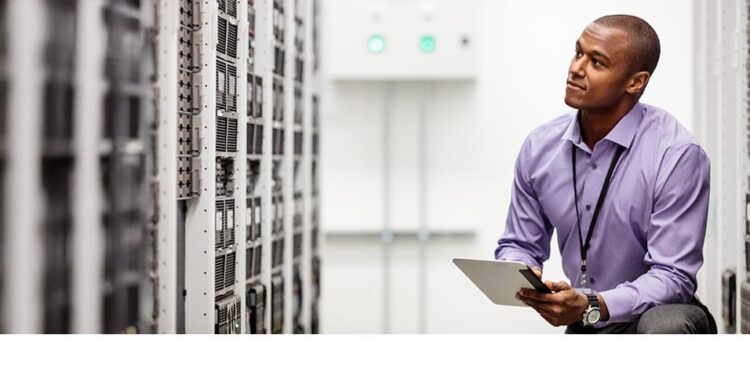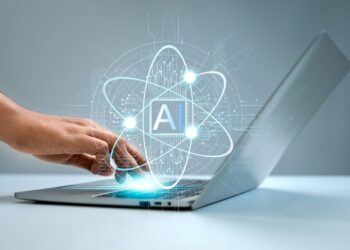What are some of the barriers you often see with organisations’ current IT infrastructure that hinder AI adoption?
One of the common key barriers I see is the lack of an AI strategy. All AI projects should take a strategic approach, with clear business goals. It’s helpful to understand your existing IT infrastructure before looking to develop an AI native infrastructure. Many organisations face challenges with outdated or inflexible infrastructure that isn’t designed to handle the demands of AI. Legacy systems often lack the scalability, security and performance required for modern workloads, which can create bottlenecks and roadblocks. Additionally, organisations are looking to rely less on public cloud solutions, with concerns around data sovereignty, unpredictable costs and limited observability.
Why is modernising IT infrastructure critical for organisations adopting AI?
AI is transforming industries and enabling organisations to unlock insights, streamline operations and drive innovation. But without the right infrastructure, they can’t fully realise AI’s potential. A modern IT infrastructure must be flexible, secure and scalable to support not just daily operations but also advanced workloads. This dual focus ensures organisations can innovate while maintaining efficiency in their day-to-day focus. A tech refresh is the ideal opportunity to rethink your architecture. Investing in energy efficient, high-performance systems not only enhance AI adoption, but addresses broader organisational goals like reducing operational costs and meeting sustainability targets.
For example, HPE’s Intel-powered solutions, like the ProLiant DL380a Gen11 server, are designed for these exact needs. With Xeon® scalable processors and advanced GPU accelerators, our modern servers support the day-to-day operation of the organisation whilst also transforming data into intelligence, optimising IT operations and preparing for future AI developments.
How does sustainability fit with the idea of a modern IT infrastructure?
Sustainability is a key part of an IT strategy, with environmental impact a priority across most industries now. Modern energy-efficient architectures using advanced processors and GPUs help to reduce power consumption without sacrificing performance. Modern servers, like HPE’s ProLiant DL380a Gen11, are designed to support high-performance AI workloads while maintaining a low energy footprint.
With some organisations moving away from public cloud, hybrid and specific on-premises solutions reduce reliance on data centres, giving greater control over an organisation’s carbon footprint. Adopting scalable, sustainable architectures allows organisations to meet their environmental goals while staying competitive.
What challenges do organisations face when implementing AI?
One key challenge is ensuring the infrastructure can handle the computational demands of AI. AI workloads, especially in areas like machine learning and inferencing, require next-gen compute capabilities. There is great potential for building and using a range of AI models, but the infrastructure needs to be able to support them. With concerns around public cloud, bringing workloads back on-premises or adopting a hybrid approach can address these challenges while providing greater control and security.
Security is another challenge, and critical to consider when integrating AI into your operations. AI workloads often involve processing sensitive data and without robust measures in place, organisations expose themselves to significant risks. A modern IT infrastructure must provide end-to-end security, from data encryption to secure hardware.
With hybrid and on-premises models gaining in popularity, organisations can ensure data sovereignty and comply with industry regulations while maintaining full control over their data. HPE solutions come with built-in security features, enabling organisations to confidently adopt AI without compromising on data protection.
What challenges do organisations face when implementing a data strategy for AI?
A well-designed data strategy is crucial for the success of AI, however many organisations struggle with data silos and poor integration. AI requires real-time access to data across multiple sources. Without a scalable infrastructure to support data movement, processing and storage there’s a real risk of bottlenecks and missed opportunities. A centralised data platform and optimised storage solutions should address this, enabling rapid analysis and insights. It’s vital to align your data strategy with your AI strategy, as insights from one can inform the other, preparing you for both current and future demands.
Is AI only for large enterprises with significant budgets?
Not at all. While large organisations might build end-to-end AI solutions, smaller organisations can access and use pre-trained and existing models to gain their own benefits. This is why it’s vital that they have the right infrastructure to support their use of AI.
You mentioned using pre-trained AI models. What benefits would something like this bring to an organisation?
Organisations have so much data that is ripe for extracting insights from to push them forwards, they just need to understand how AI can help them do this. Pre-trained models like Large Language Models are game-changers for organisations looking to adopt AI quickly and cost-effectively. These models are used for inferencing, allowing organisations to generate insights or make predictions using their data without requiring extensive customisation or expertise. Techniques like RAG (retrieval augmented generation) combine these models for real-time search and retrieval of documents. Introducing a scalable on-premises infrastructure to support AI means you can seamlessly integrate it into daily operations.
How can organisations future-proof their IT investments?
Future-proofing starts with investing in the right infrastructure, looking at how it can support you now, as well as your goals for future development. This ensures your organisation is ready for AI while continuing with essential business operations and developments. Working with trusted expert technology partners like us here at HPE helps organisations implement reliable solutions tailored to their specific needs. We ensure our customers have the right solution that supports them now as well as setting them up for the future.
Explore the Future with HPE & Intel
HPE’s Intel-powered solutions, like the ProLiant DL380a Gen11 server, empower organisations to embrace AI with confidence. Discover how this advanced, scalable infrastructure can support your digital transformation. Get in touch with HPE to learn more HPE and Intel Partnership: Industry Viewpoint










Discussion about this post